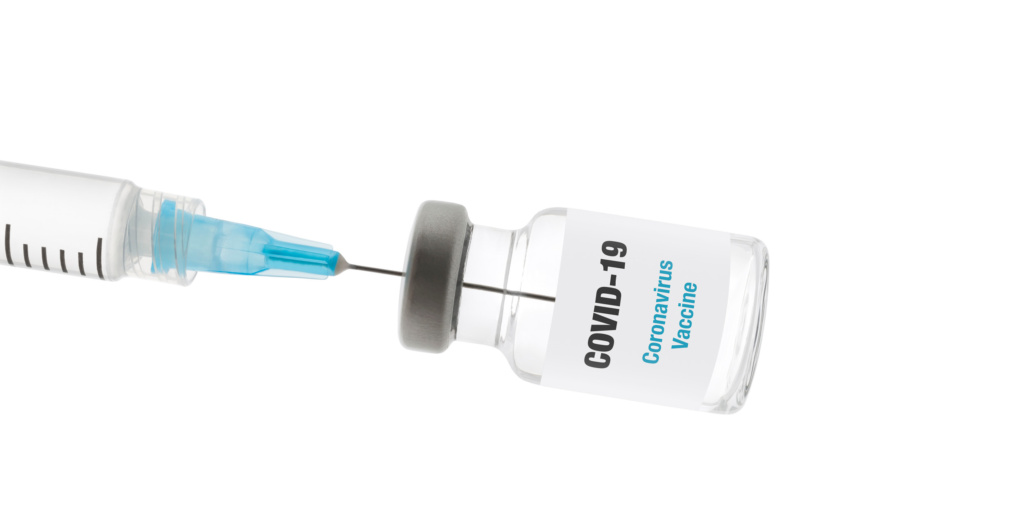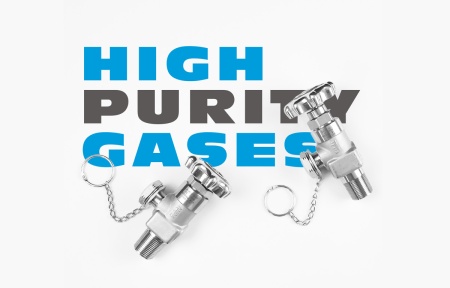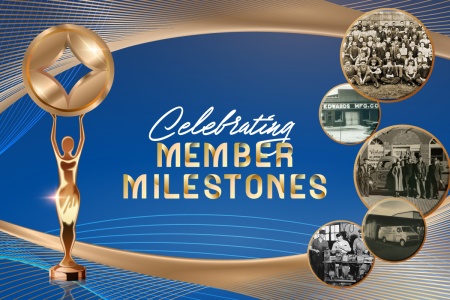The CGA sent a letter to all 50 state governors asking that essential workers be prioritized in vaccine distribution
By Rich Gottwald and Steve Guglielmo
On December 23, 2020, the Compressed Gas Association sent a letter from CGA President & CEO Rich Gottwald to all 50 U.S. governors and the Mayor of Washington, D.C. urging that portions of the essential medical, food, and industrial gas workforce be included in each state’s Frontline Essential Workers (Phase 1b) prioritization to receive COVID-19 vaccines.
Throughout the COVID-19 pandemic, the CGA has been an indispensable resource for the compressed gas industry. Its COVID-19 Industry Toolkit provides resources, links and other critical information related to COVID-19, both for member companies and also on the state of important topics like medical oxygen availability, dry ice supply, cylinder cleaning guidelines and much more.
Rich Gottwald was gracious enough to join Welding & Gases Today for a conversation about the CGA’s response to the pandemic and ongoing efforts to get portions of our industry prioritized for vaccination. We thank him so much for his time.
(Editor’s Note: This interview has been lightly edited for clarity)
Welding & Gases Today: I wanted to talk about the CGA’s efforts to ensure that portions of the medical, food and industrial gas workforce are included in phase 1B of the vaccine rollouts in all 50 states. I know that you have contacted the governors in each state. Could you give me an overview about where those efforts stemmed from and the status of them?
Rich Gottwald: Back in the Fall, when the CDC announced what the federal recommendation priority order would be, we realized that our products were critical to society in many ways. Medical oxygen being the number one treatment for COVID, CO2 being used for all sorts of food and beverage applications, these were essential. And so, we thought it would be wise to move, not the entire industry, but those in the industry that were involved in delivering the products to medical centers and hospitals, to ensure that they were protected. Making sure that the people making the gases for food supply were protected, so that wouldn’t be interrupted. We looked at what our products’ roles were in society and determined that that was something that should be given consideration.
WGT: You sent that letter out in late December, as the vaccines were gaining approval and starting their initial roll out. You contacted all 50 governors and the Mayor of Washington, D.C. What has the response been, so far?
Rich: We heard from several states immediately. Many states told us that they were just starting to get their arms around the problem and that they would keep us posted. As we have moved through the past two months, we have not seen our products moved up the list. I think there’s a couple of reasons for that. I think there has been a challenge in the fact that the federal government did not have the deciding authority, and they left it up to the states. In every state, there are different rules as to how they formulate that list. I think, at this point, most states are still vaccinating elderly and those with underlying health conditions. I have not seen any movement that it looks like our employees are going to be moved up the list. There are a lot of industries who feel that they should also be moved up the list. There is a lot of jockeying.
WGT: We talked about why you felt it was important to lobby on behalf of these workers, but have you heard from CGA members or people in the medical oxygen field about specific challenges that they encountered during the height of the pandemic? Any areas where you felt that members were being specifically challenged?
Rich: If you go back to the medical oxygen issue, the fact is that many companies were delivering oxygen to hospitals with COVID wards or facilities that were specifically designed to treat COVID. It was understood that it was important to keep those people, specifically, protected. They were going into hospitals, many times they were handing the product off to people who are all geared up. It was important that we kept that supply moving. That was one of the initial drivers behind it.
I also would note that, even though we have not successful, to date, in having our people moved up the list, another reason for doing this is that since the beginning of COVID, we realized how little our industry is known and understood by regulators and by the general public. We have used many opportunities, since the beginning of COVID, to make sure that people understand the role that our products play in society and how important they are. Even this letter, we were able to reach out to every single state and demonstrate the value that we are providing. We are providing the most important treatment for COVID. This is an industry that is important, and it should be recognized. Even that, in itself, has been a positive part of this.
WGT: You mentioned the light that has been shone on the industry throughout all of this. CGA, specifically, has put forth a really impressive COVID-19 resource center. Not just the letter to the governors, but also webinars and guidance for members. Could you talk about the resource center and the types of topics you covered and just the work that CGA has done throughout this pandemic to educate members and the industry at large?
Rich: We did recognize early on that we could play a role in helping our members comply with this. One of our tenets, when we set this is up, was that the COVID toolkit would focus specifically on issues pertaining to our members where we had expertise. If people could find some general thing by reading The Washington Post, that was not going to go into our resource center. We wanted to be very specific on the type of information that was usable for our members and that impacted their businesses. That was the beginning of it.
We also realized, back in the beginning, when we were talking with all levels of government around CO2 shortages, or the need for medical oxygen, that we were having conversations with regulators that other people weren’t able to have. That we would be able to communicate some of those insights directly to our members. We also then realized that it was too important to keep behind the wall just for members. We wanted to make sure that anybody in the industry, and really anybody who needed this information, could get access to this information. And so, in that toolkit, we put a lot of our standards and documents that are typically member-only documents, we made them available to anybody that we thought could benefit from those.
We also made some proactive efforts. For instance, back in the Spring of 2020, when Javits Center was setting up a COVID Care Center, we worked with them to help them understand how to set up a field hospital with oxygen systems and how to do that quickly. What challenges to avoid.
We were proactive with California just last month. They were setting up facilities to quickly fill oxygen cylinders to be shipped to all these hospitals. We had read something about it in the newspaper and our technical staff saw a couple of things that jumped out at them. So, we put together communication with them and provided them with resources on how to do it safely, quickly, efficiently and to make sure that, at the end of the day, they were not going to have any safety challenges and were able to get the product out to medical facilities quickly.
WGT: I know the phrase “Once COVID is over…” has gotten beaten into the ground, but looking past this pandemic, are there any lessons learned for CGA or for its members that have come out of this that you think are going to stick around and that we will be better off for in the long run? Any lasting wisdom that is going to come out of this?
Rich: I think the communication piece. We will continue to educate on the value of our products and the value of our industry. People know the value of our products. But we have always been known as the “invisible industry.” We want to change that so that people understand what our industry brings to society. And that can help in many different ways. Whether it’s in a crisis like this where we have products that are needed. It could even play into things like young people looking for careers to get involved in. Like any industry out there, we’re looking to make sure that young people get involved and we have young people to hire into the industry. Just letting people know that this industry exists, young engineers and young technicians. This is an industry to get involved in. So, I think you are going to see continued focus on increased communications around CGA and the industry itself.
WGT: Is there anything you are working on currently with regards to COVID that you want to make sure members are aware of?
Rich: I have talked to many news outlets over the past year. Over the past couple of weeks, I have gotten calls from major media outlets who all want an update. We have been fortunate to be able to say that it appears, for the moment, that the peak in North America of the inability to provide oxygen and the CO2 shortages that we had been concerned about, those have gone by the wayside. Right now, there is an ability to meet the demand for those products. So, I would say that, for the moment, we are good as an industry. Our members are meeting the demands that are coming at them. We also got some positive news the other day that the Pfizer vaccine can go for two weeks without being put on ultra-cold. So even though we were confidently meeting that demand for dry ice, I think that allows everybody to take a deep breath and worry less about that aspect of delivery. So, I think there are a lot of positive data points out there for the country and for the industry that we are able to meet these demands.










